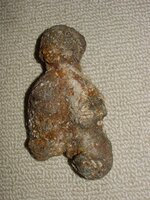Beach_Walker
Newbie
- May 29, 2016
- 2
- 1
- Primary Interest:
- All Treasure Hunting
Hi all! (Happy Memorial Day Weekend!) 
I'm a beach walker with a hopeless penchant for picking up oddities that I find on my seaside strolls. This curiosity strikes my rather vivid imagination with all sorts of possibilities. (I am near the treasure coast of Florida, after all!) In all likelihood, it's something unimaginative like a metal bolt that fell of an ocean going vessel. The item is about 5" long.
Any suggestions on how I can (inexpensively) find out what's inside, without ruining it? (There is some sort of metal in there, as there's a very slight magnetic pull.)
Thanks in advance!

I'm a beach walker with a hopeless penchant for picking up oddities that I find on my seaside strolls. This curiosity strikes my rather vivid imagination with all sorts of possibilities. (I am near the treasure coast of Florida, after all!) In all likelihood, it's something unimaginative like a metal bolt that fell of an ocean going vessel. The item is about 5" long.
Any suggestions on how I can (inexpensively) find out what's inside, without ruining it? (There is some sort of metal in there, as there's a very slight magnetic pull.)

Thanks in advance!
Upvote
1






